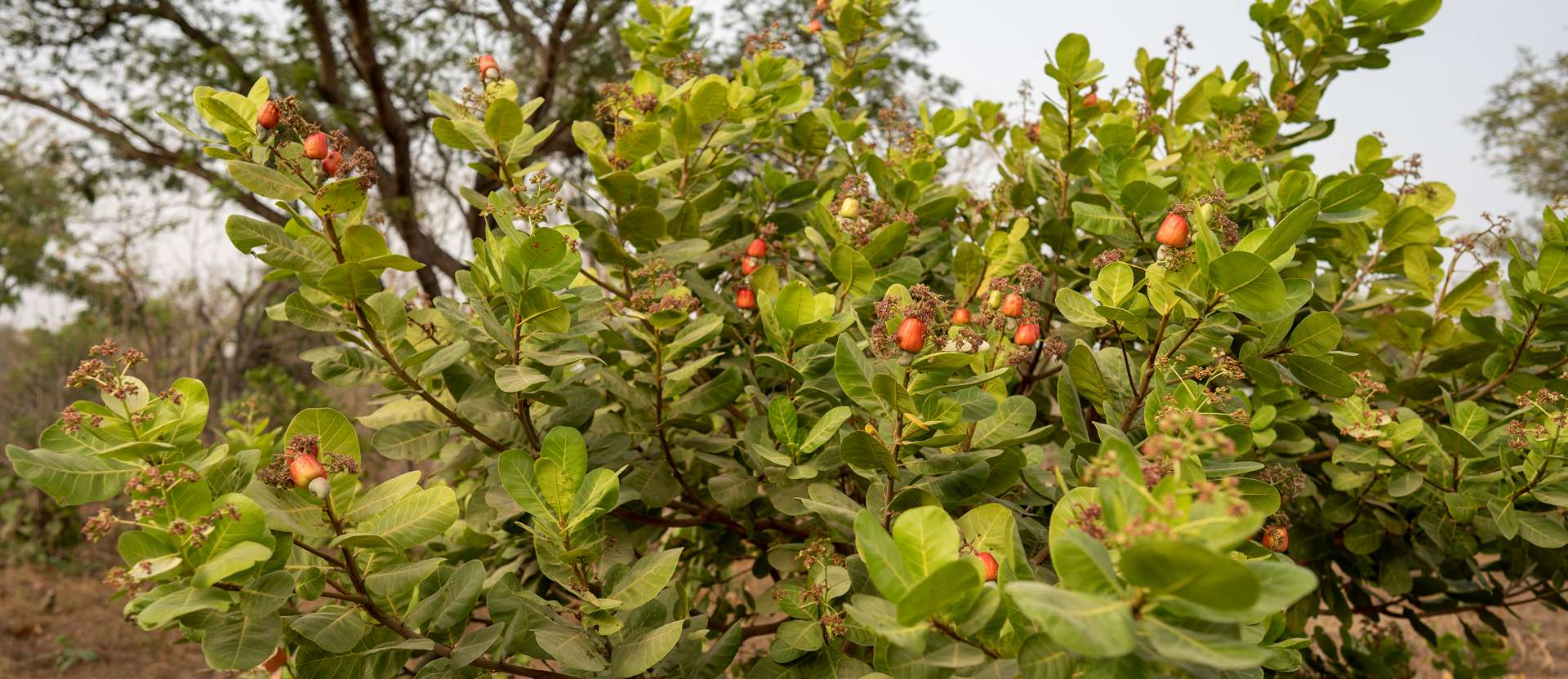
Agroforestry, in a nutshell
In the rural dryland areas where we work, many people’s livelihoods depend on the land. For smallholder farmers, it can be difficult to make a living from the region’s staple crops like maize and cassava – the impacts of the climate crisis are making crop failure more likely, land less fertile, and harvests more unpredictable.
Agroforestry is one solution – a technique we implement across many of our projects. Bringing the forest to the farm, can help to grow incomes, restore degraded farmland, and increase biodiversity.
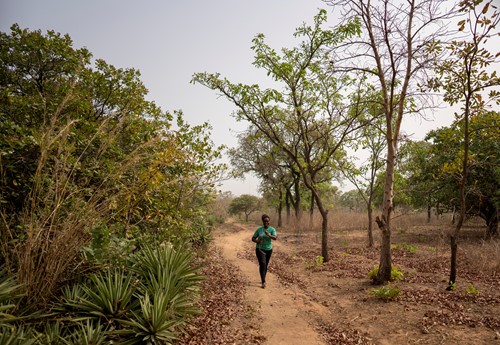
From shade-grown coffee farms in Mexico and Nicaragua, to walnut-growing in Wales, agroforestry is taking off around the world. Combining traditional and cutting-edge farming techniques, agroforestry is proving particularly helpful in Africa’s drylands, where it is helping to address some of the region’s most pressing issues.
So, what is agroforestry?
In a nutshell, agroforestry is about putting trees back at the heart of farmland. At Tree Aid, we don’t grow trees for timber – in fact, deforestation on farmland is one of the leading causes of land degradation in the Sahel region. Instead, we grow varieties that can continue to benefit people long into the future, producing nutritious leaves, nuts, fruits and seeds that can be eaten to improve diets, or sold to boost incomes.
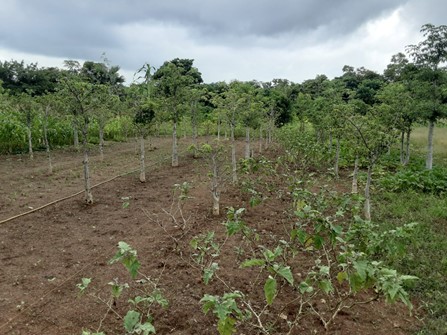
Image: Agroforestry takes many forms, but it often looks like this plot in Burkina Faso - where lines of trees are grown between rows of crops
Together with communities, we also pick species which are well-suited to a changing climate, and the erratic droughts and flooding which are now commonplace in the region. Amongst others, this includes cashews, baobab and moringa.
These choices make up part of our ‘climate-smart agriculture’ approach – working with farmers to ensure their farms and tree products businesses are fit for the future.
What are the benefits of agroforestry?
- Tackling desertification – Most staple crops don’t have very deep roots. Periods of drought, followed by heavy rains leave the soil weak and prone to wash away (the process known as soil erosion). However, when you add trees to a farming system, their roots reach deep into the ground, helping to hold soil in place. What’s more, their canopies shelter the soil from direct rainfall, reducing soil run-off further.
- Trees’ deep roots also help improve crop health (and yields) - by cycling nutrients throughout the soil
- Future-proofing farms and communities – trees provide shade to crops, livestock and animals during heatwaves
- Healthier soils, healthier planet – did you know that healthier soils also store more carbon?
Image: The canopies of large trees can help protect younger trees and crops from heavy rains and harsh sunlight
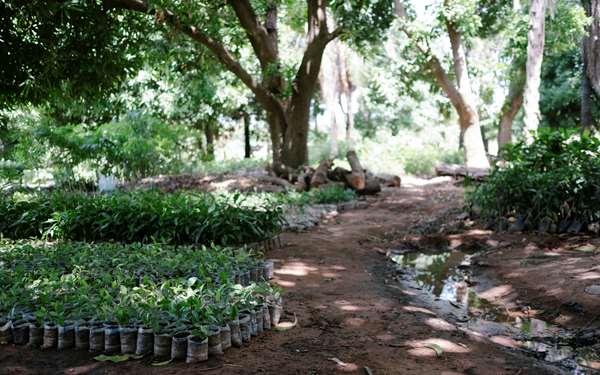
Growing resilience in Ghana - cashew agroforestry
Between 1990 and 2020, Ghana lost nearly 2 million hectares of forest. This deforestation, combined with rising temperatures and changing land use means that 35% of the country’s land is under threat of desertification. Agroforestry is helping to restore this forest cover, benefitting local businesses and improving dietary diversity in the process.
We’ve been working with farmers to implement agroforestry in Ghana’s West Gonja region. We don’t grow cashew trees everywhere – it’s about choosing the right tree for the right place – however cashews are well suited to this region: West Gonja is known as Ghana’s ‘cashew belt’.
Providing training from seed to sale, we’re working with farmers to grow new cashew trees on their farmland and care for existing trees; this high-value crop is helping to diversify incomes and restore land, growing resilient and sustainable businesses which are equipped to tackle the significant challenges of a changing climate.
Did you know that 57% of the world's cashew trees are grown in Africa? Find out more about the cool cashew.
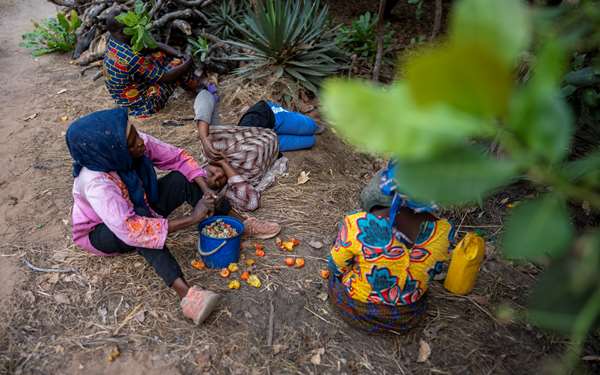
MEET THE CASHEW FARMERS

Agroforestry for everyone
Within one cashew orchard, the whole community is being brought together to grow different crops which benefit each other. We’re training farmers to ‘intercrop’ legumes (like beans and peanuts) between the trees, as their nitrogen-fixing roots also thrive.
All parts of the tree are useful to the community – the fallen leaves are used in mulching and composting, the fruits and nuts are eaten or sold to earn an income, and the tree itself has a transformative effect on the land, trees and crops around it.
Strength in diversity
“All this diversification has improved the livelihoods of farmers in the West Gonja Municipality” – Ayishetu Soale
In places which are vulnerable to climate shocks, it can be risky to rely on just one source of income. Farming one crop alone is the agricultural equivalent of ‘putting all of your eggs in one basket’ – if crop disease, flooding or drought hits, you’re likely to lose your whole harvest!
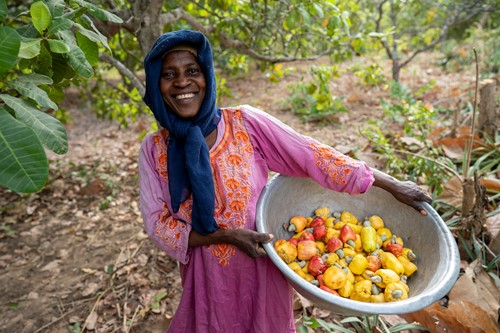
“Cashew has changed my life… even if I decided that I was only going to sell cashew nuts, I would still make good money. So you can imagine how much more comes in when you add all the other products I can now make” – Ayishetu Soale
Agroforestry can help farmers to ‘diversify’ – trees can be grown on farms without needing to buy more land – and if one income source fails, you have a back-up. This helps farmers like Ayishetu to plan for the future and ensure a more steady & reliable income source.
Within one small plot, West Gonja’s farmers are now running numerous enterprises, from vegetable and legume harvesting, to cashew and honey production [beehive link]. Each element of the farm helps to benefit the other too, creating a ‘closed loop’ system that boosts income, without degrading the land.
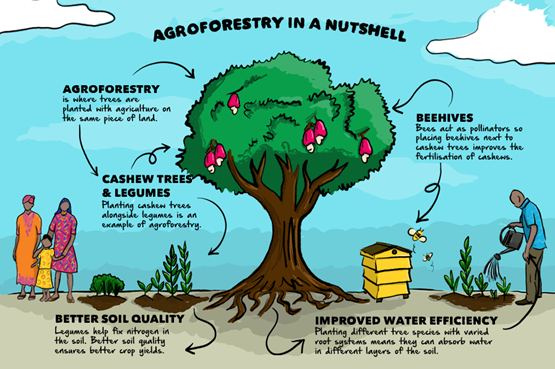
“The bees help in the pollination of the trees – it increases the yields of the cashew and also enables the beekeeping groups to get enough honey for sale” – Ayishetu explains the ‘closed loop’ system
Agroforestry for the future
“At a global level agroforestry could sequester 8 billion tonnes of carbon per year – equivalent to 40% of a decade of fossil-fuel emissions from UK, Germany, France and Canada combined, in the 2010s” – World Agroforestry
We’re proud to put agroforestry at the heart of our projects in Africa’s drylands. This way of growing trees represents a truly long-term solution, which works both for people and the planet. As we look to scale-up reforestation projects around the world, agroforestry offers real potential to tackle the climate, nature and health emergencies, and support farmers on the frontlines of the climate crisis around the world.
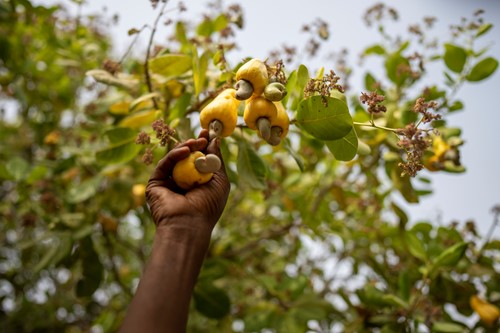
“If well-taken care of, cashew trees can live up to a hundred years. My great grandchildren can come and benefit” – Ayishetu Soale


